
There are some obvious benefits from having a garden — freshly grown food, meaningful, rewarding work, and a relationship with your land that you can feel good about.
Then there are some benefits that aren’t as obvious, such as getting “bonus” foods that you’ll rarely, if ever, find in a grocery store. These are fleeting treats that aren’t popular or shelf-stable enough to ship across the country, and that the average nongardener doesn’t even know exists. Often, their season is as short as a daylily blossom, blink-and-you-miss-it harvests of unripe tender seed pods, unfurling shoots, or meristematic stems.
And if you happen to be someone who went to the trouble to plant your own garlic — specifically a type of hardneck garlic — you’re about to be given one of those very delectable and ephemeral delights.
Welcome to the secret club of garlic scapes.
What Are Garlic Scapes?
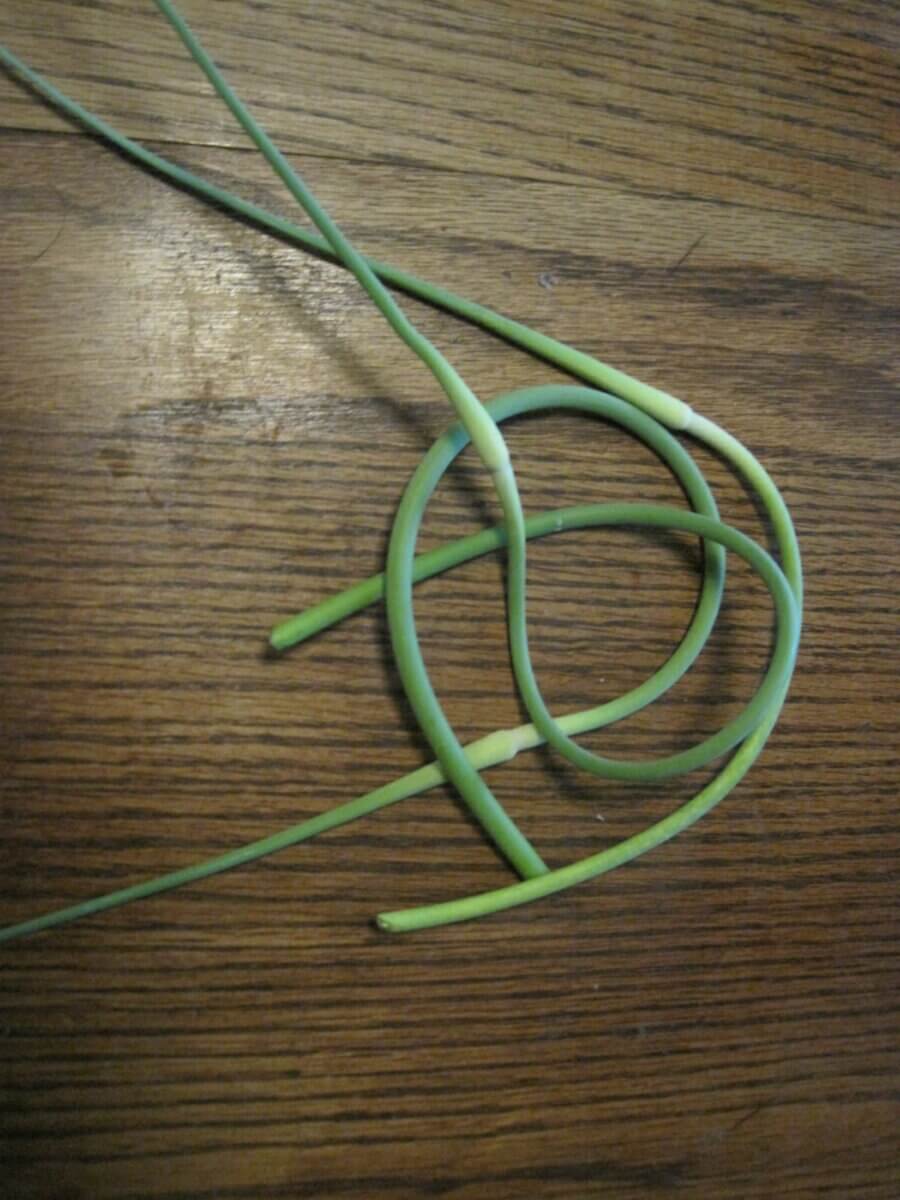
Garlic scapes are basically the result of hardneck garlic bolting in the late spring. The “hard neck” that gives the bulbs their name is a central core that, when the plant was green and growing, would have become a tall, hard-stemmed flower stalk.
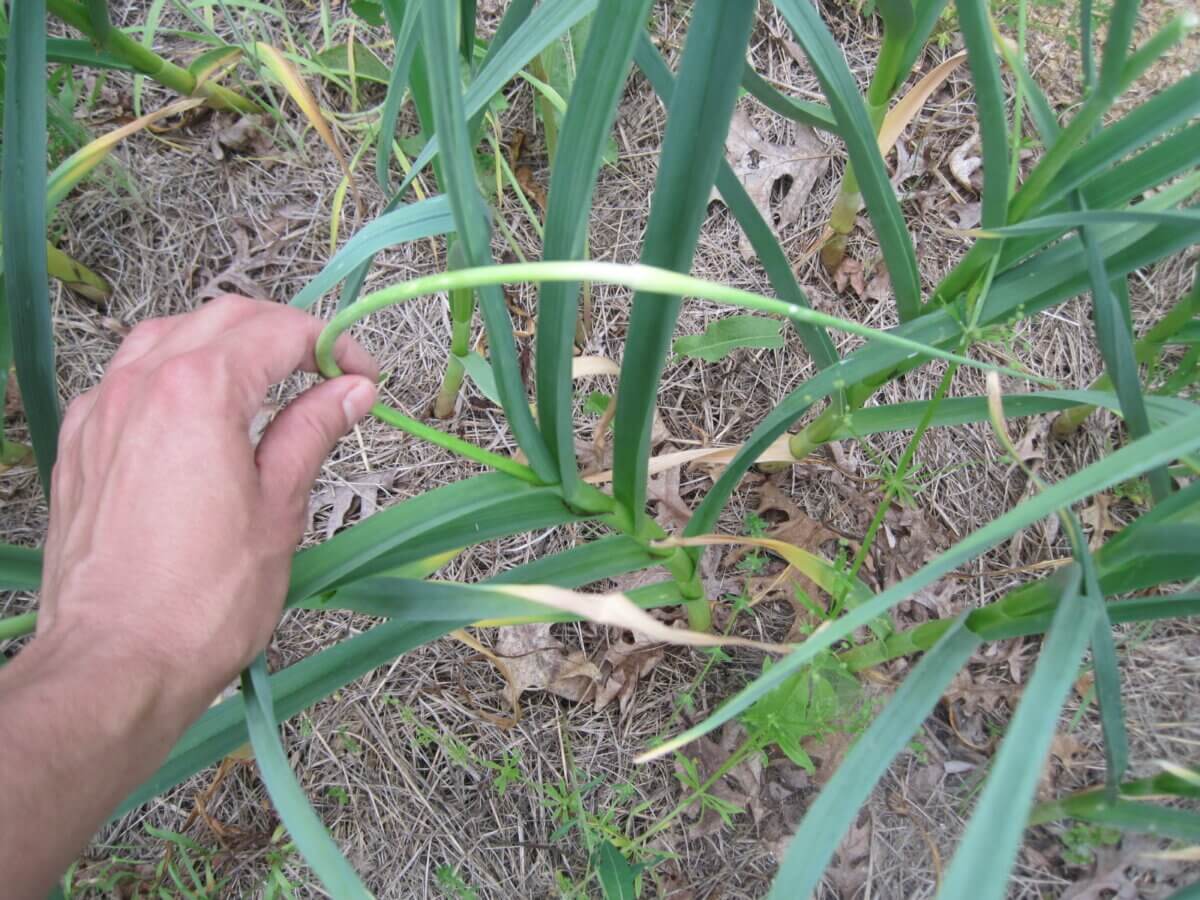
When it emerges in a hurry from the garlic plant, the scapes grow in a wonderfully curved, twirly shape, sometimes swirling back, and sometimes forming a graceful arch. But as lovely as they may look, dancing above the green spears of the pungent parent plant’s leaves, they can’t stick around if you want to have a good crop of garlic. If allowed to grow to their full extent and blossom, they ‘ll end up using the energy stored in the parent plant roots to fuel their flowering, which results in smaller bulbs with less flavor. So if it’s tasty garlic you want, the flower stalks have to go before they bloom.

But here’s the nice part. The scapes are not only edible, they’re downright delicious. So when it comes time to trim your hardneck garlic, make some dinner plans.
When Do They Arrive?
Garlic scapes emerge in later spring, once the heat of the incoming summer starts to creep up the thermometer. In my Ozark, zone 6 garden, it is usually around the end of May or the first few days of June. Once your garlic plants have reached their full height, watch for the round scapes to begin growing from the top. They’ll start out small — maybe 1 to 2 inches long, but give them a day or two and they can reach more than a foot long in a hurry.
How Can I Harvest Garlic Scapes?
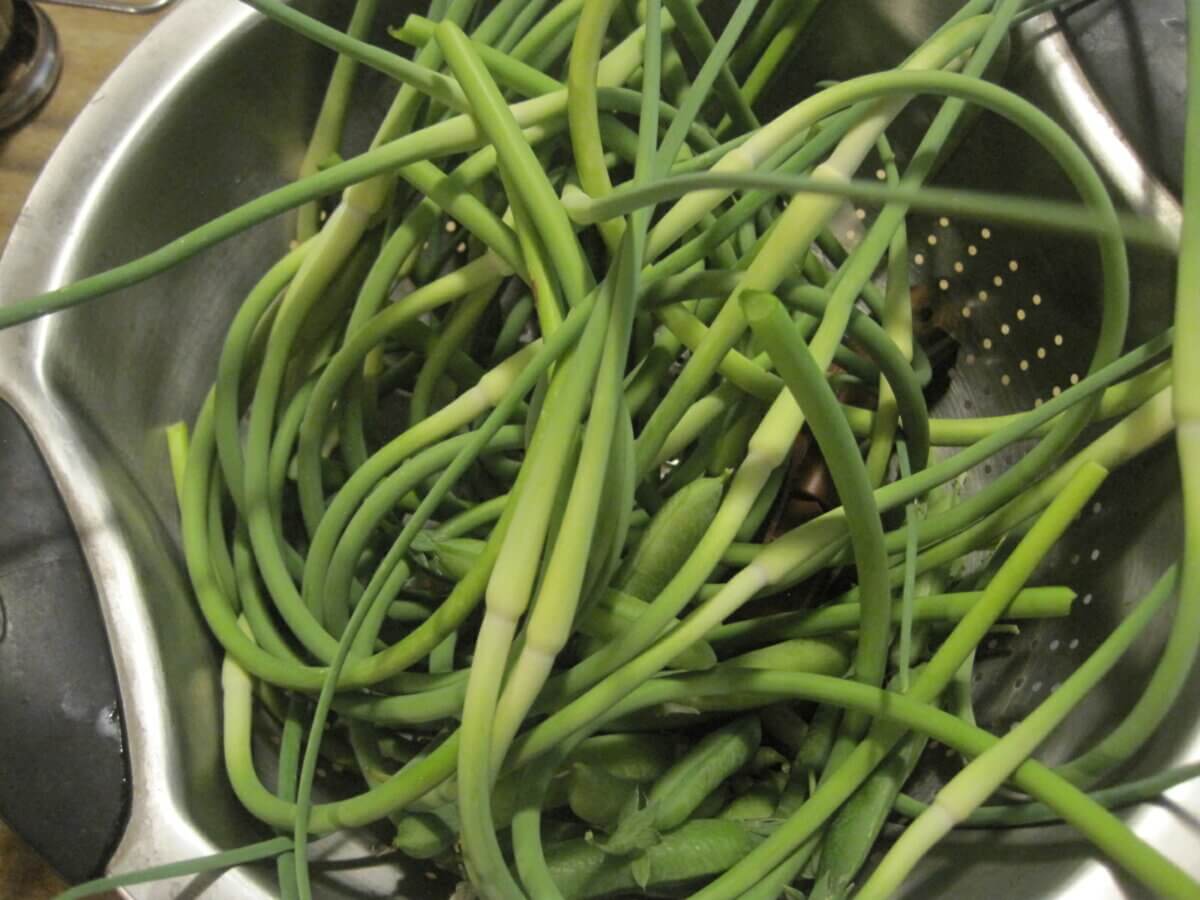
A sharp knife is the best tool to use for swiftly slicing scapes from the top of the garlic. Though removing the scapes is the goal, you certainly don’t want to damage the parent plant while it’s still doing its best to make a nice head of garlic beneath the soil.
A few days after slicing off the scapes, give your garlic plants a second look — you may find that the scape stumps have grown a few more inches. A good idea is to keep the knife handy and give them a second trim for a bonus harvest of scape nublets.
Scapes are a nice preview for the true garlic harvest that will follow a few weeks later.
What Do They Taste Like?
Garlic scapes taste like garlic (hopefully no surprise there). But rather than tasting fiery-hot and pungent like the bulb proper, they have a mild garlic flavor and are nicely balanced with a vegetable-like greenness that is very edible. To the uninitiated, you can compare scapes to garlicky green beans, but the texture is much more meaty and chewy, rather than crunchy. It’s difficult to explain, but easy to like once you’ve tried it.
Though I must warn you: Once you get a taste of scapes, you’re going to be wanting more of them, and there will not be any to be found. Their availability is momentary, and soon over. You’ll have to make them a long-awaited highlight next spring.
How Do I Prepare Garlic Scapes?
Here are some tips to prepare scapes. First, give them a quick rinse with water — unless you drop them on the ground, scapes are really clean, so you won’t need to scrub.
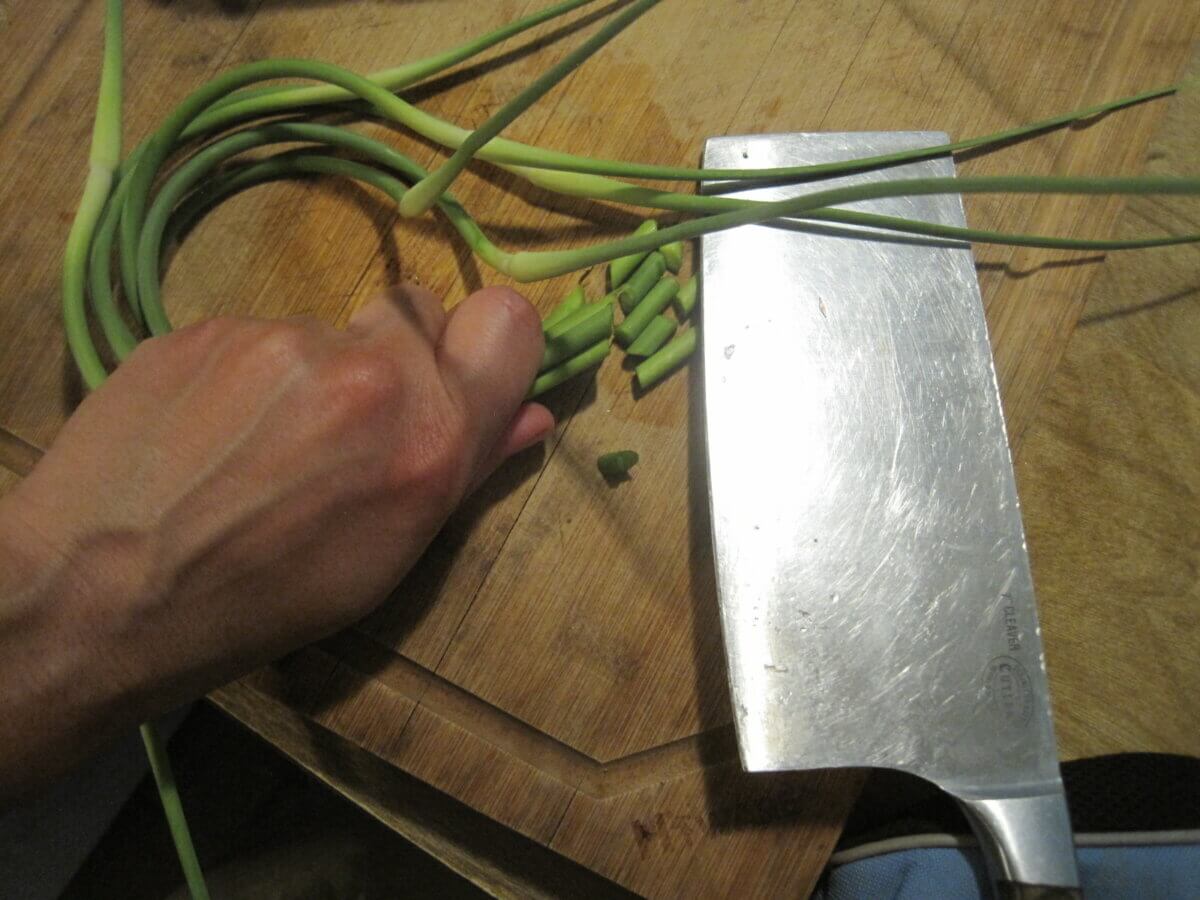
Next, cut the scapes into pieces — usually an inch or so long — to prepare them for cooking (they look extra fancy if you cut them on a bias). Scapes can be as unruly as a bunch of cats, so I usually grab a handful, orient them all in the same direction, and cut from the base to the tip.
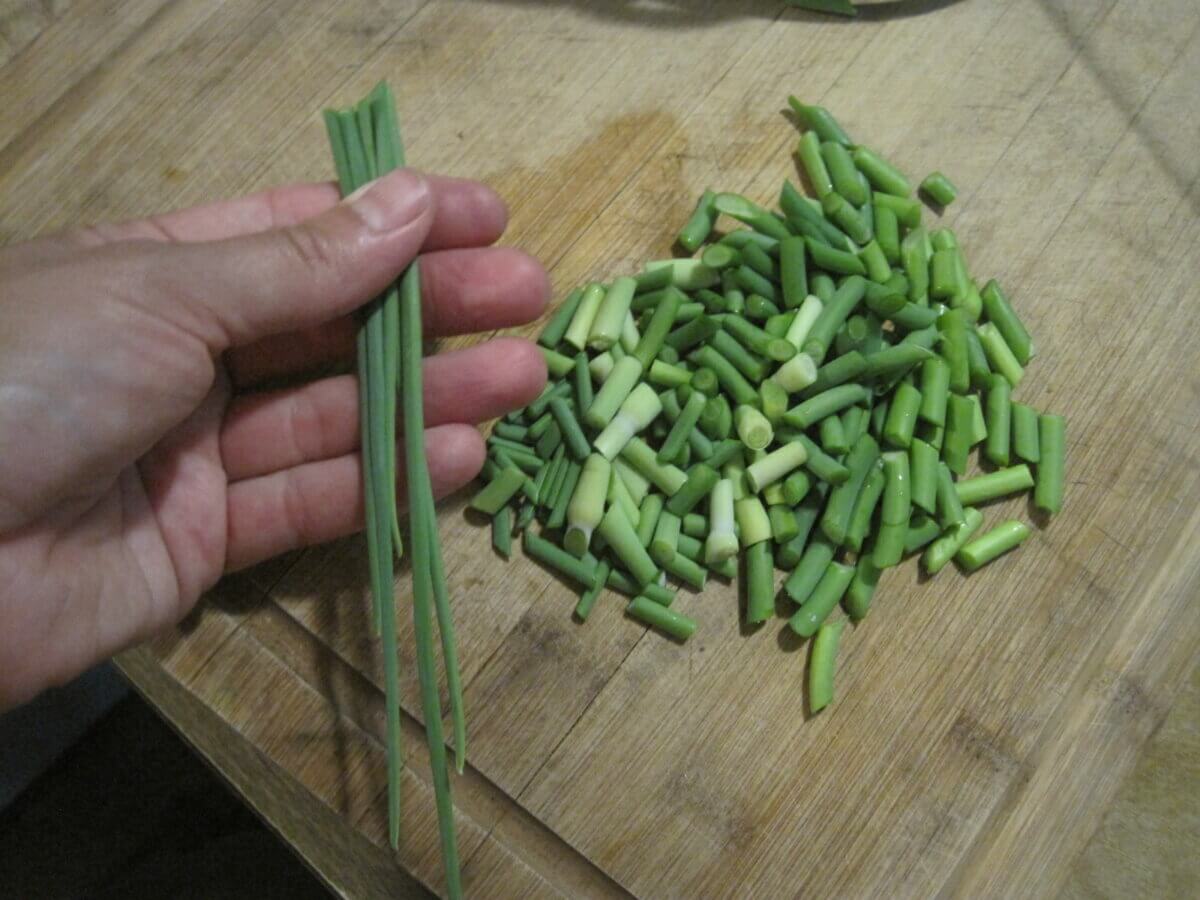
The light-green flower bud at the end is sometimes a bit too tough to eat, so you can choose whether or not you want to cook it. I try to get as much scapey goodness as I can, however, so I settle for cutting off the thread-thin, unopened flower tip, and sending it to the compost or the chickens.
The simplest (and arguably best) way to cook scapes is to stir-fry them with a bit of salt, spices, or soy sauce. If you don’t cook them too long, they’ll stay a bright spring-green and are wonderful topped with a dash of toasted sesame seeds or slivered almonds.
Scapes can also be eaten raw, so they’re a nice garlic bulb alternative in pesto or a delightful topping for a fresh spring salad if cut super-thin.
You could try pickling scapes with your favorite pickle recipe to see if you can preserve them for the winter (fat chance they’ll make it that long, though, with how tasty they are).
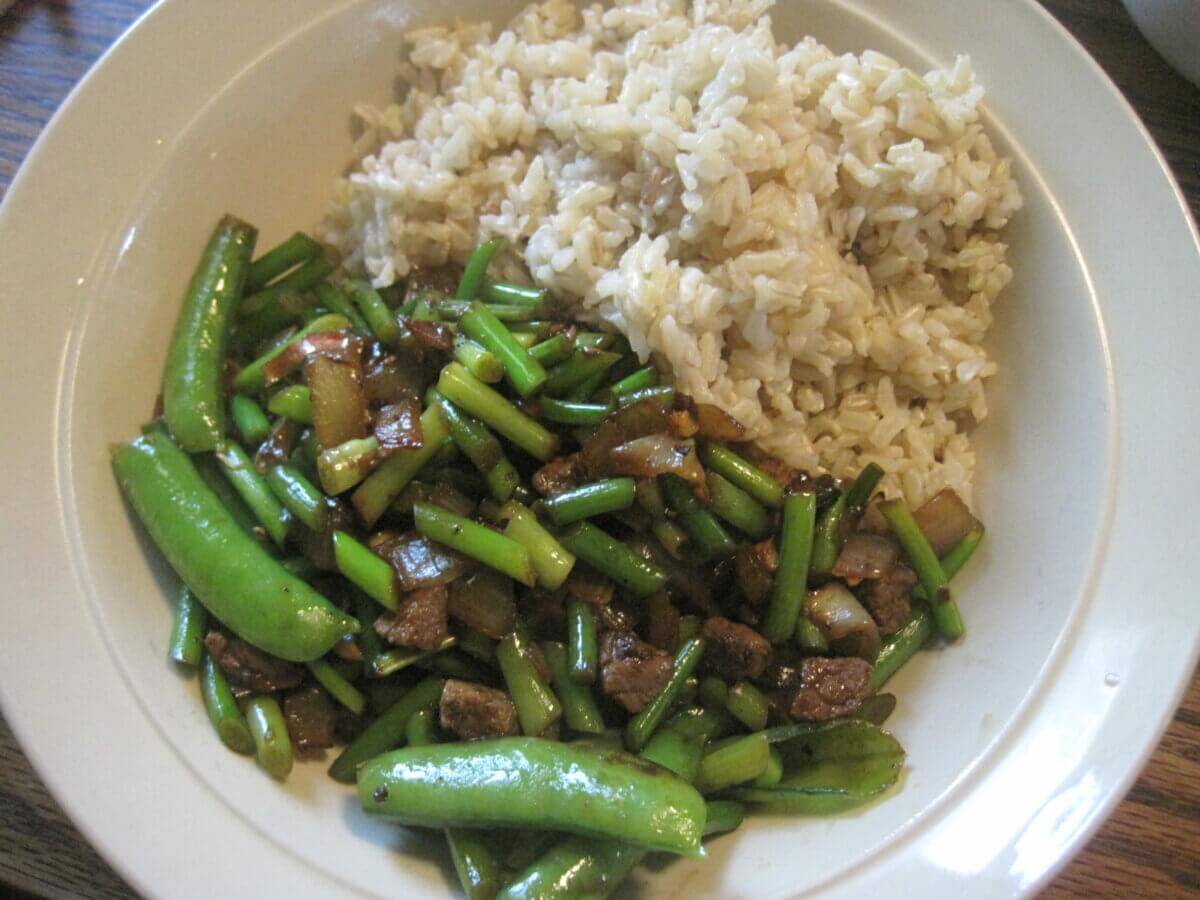
This year, my favorite way of scape preparation was the one I have photographed here — a tasty mixture of thinly-sliced beef, garlic scapes, ginger, onion, and freshly picked spring peas, sauteed with heaps of black pepper and a dash of soy sauce. Paired with brown rice and topped with a spicy Sichuan chili oil, it is pure homestead garden decadence.
Garlic scapes are a great addition to your dishes, and if you grow your own garlic, I hope you have already been able to enjoy garlic scapes. But if you’ve never known that those wonderful curlicues are worth eating, I hope this article has given you a free, lifetime membership to the Garlic Scape Club. We may only meet once a year, but we always look forward to it, don’t we?





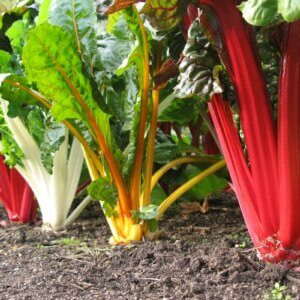




































Leave a Reply